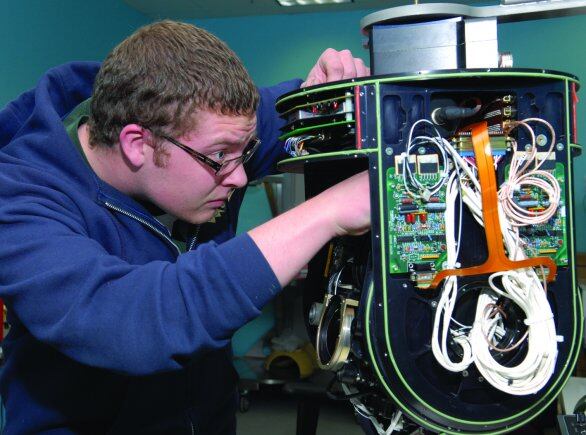Tobyhanna Army Depot, located near the Poconos Mountains in northern Pennsylvania, serves as the Defense Department's leading provider of C4ISR systems. C4ISRNET had a unique opportunity to tour the campus, which spreads across 1,336 acres and is the largest industrial employer in the area, and view the systems for which Tobyhanna conducts support — not just for the Army, but also joint force and coalition partners.
"We are the Department of Defense's premier C4ISR support provider. Providing overhaul, providing light fabrication, providing logistics support for everything from handheld radios all the way up to sophisticated joint threat emitters and radars, and we are branching into software support for the Army," the depot's commander, Col. Gregory Peterson, said in an interview.
The depot provides support for anything that runs this gamut, he said. "We're more than just an Army provider, about half of our workload is other services. We provide that same level of support for the Army, but [also] for the Air Force, Marine Corps [and] a small portion of the Navy."
Support to both joint force and coalition partners is critical as branches of the U.S. armed forces will never deploy alone. "The ability of everybody working on the same type of radios, using these same type of radios, as an example, is absolutely key and critical so everybody can talk together, everybody can see the same things together, everybody functions off the same common operating picture," Peterson said, regarding how Tobyhanna contributes to joint readiness. "By doing that and not having disparate sets of equipment … helps with that interoperability."
Peterson added that there is a great rapport with the other services. "We get together and do line-by-line reviews of the equipment that’s being worked on, the status, when it’s going to be ready," he said.
As the military is making strategic and operational planning adjustments focused on more dynamic environments — such as a focus on multi-domain operations — Peterson said Tobyhanna’s role in this new world is to stay ahead of technology. "You’ve got to understand the environment and what the technological changes are that are coming down the pipe," he said. "So you’ve got to see the big, broad spectrum of this is what technology’s doing, then you’ve got to look at what are the services doing specifically with that technology, or not, and how are the services trying to harness that technology to their advantage."
The next step, Peterson said, is to look internally and determine whether or not Tobyhanna is postured to support these new programs with new technology from a workforce, training, facility, tools, equipment supply chain and logistics standpoint.
Mark Pomerleau is a reporter for C4ISRNET, covering information warfare and cyberspace.








